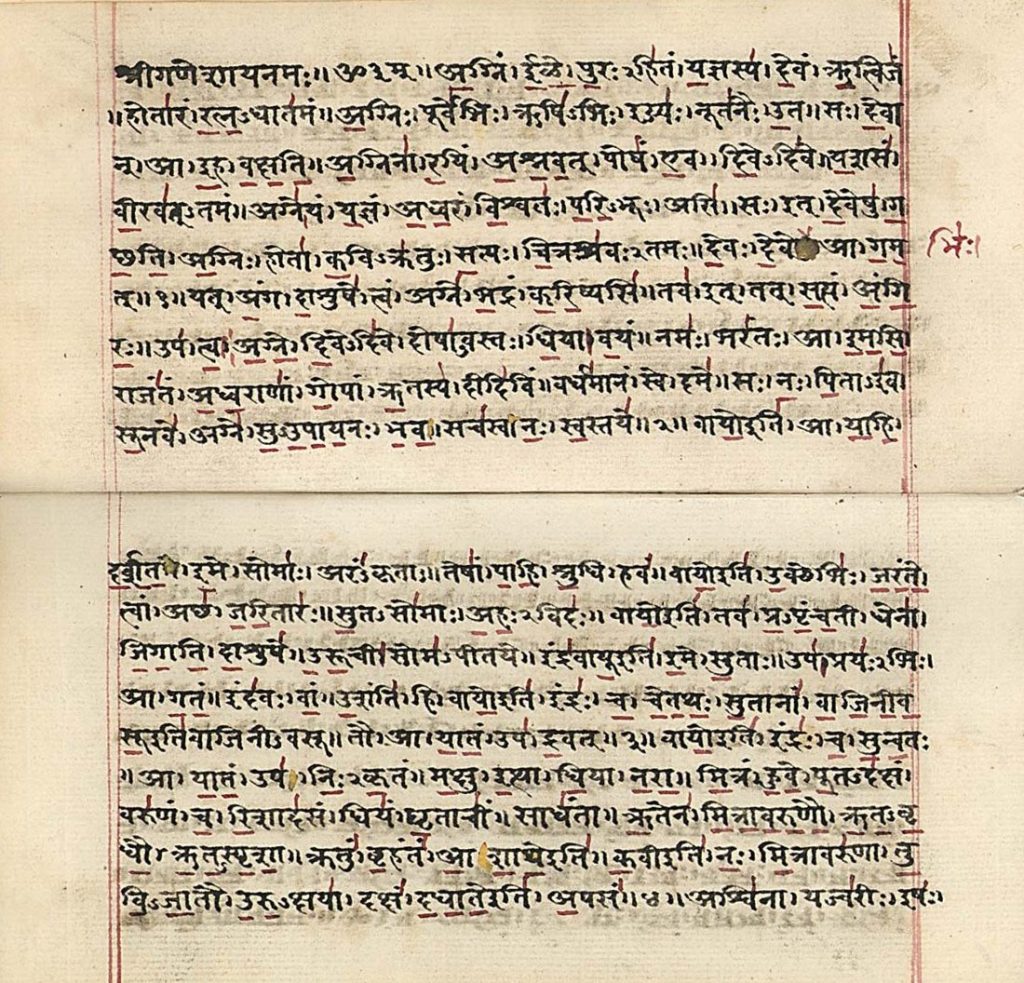Context:
A group of archaeologists is collaborating with Sanskrit scholars to decipher the Rigveda text and establish a relationship between the Harappan and Vedic age people.
More on the news
A clear understanding of the Rigveda text is important for relating archaeological evidence unearthed in the excavations of Harappan settlements to the Vedic age.
- Evidence from Rakhigarhi: At Rakhigarhi, evidence of ritual platforms and fire altars was found. Fire worship is mentioned in Rigvedic texts.
- Origin of the Vedas: Some historians believe that the Vedas originated between 1,500 BC and 2,000 BC. However, other historians believe the Vedas date back to 2,500 BC, or 4,500 years ago, the time of the Harappan civilisation.
Evidence from the River Saraswati
- The Rigveda mentioned the river Saraswati about 71 times.
- During archaeological excavations, it was discovered that nearly 2,000 known Harappan settlements were spread over the Indus basin, Saraswati, and in Gujarat, of which almost two-thirds are located along the basin of the river Saraswati.
- Rigvedic texts do not mention the use of iron, so co-relation with early historic settlements that came much later, which used iron 2,400 years ago (near the Ganga Basin and the Deccan region) is impossible.
- Nowadays, the Saraswati River, which flows in the Indian part of the country, is named the Ghagghar, whereas in Pakistan, it is known as the Hakra.
Evidence from animal bones
- Animal bones were studied by archaeo-zoologists in the Surkotada, Kutch region of Gujarat.
- While Hungarian researchers concluded that the bones belonged to a domesticated horse. Another group from Harvard University concluded that these were the bones of a wild ass, as domesticated horses only came to India after 1,800 BC from central Asia.
- The Hungarian conclusion of Domesticated Horse Bones supports the idea that Harappans and Rigvedic people were the same.
- The Rigvedic Text also mentions horses, which aligns with Hungarian findings.
DNA’s Analysis of Modern Indians
- DNA evidence from the 4,600-year-old remains of a woman suggests no link to Steppe or Iranian populations, indicating that the Harappans were an Indigenous people.
- DNA analysis from the blood samples of 3,000 modern South Asians from different linguistic and religious groups found that most of them carried genetic similarities (25% to 30% genes) to the Harappan woman’s skeleton.
- Most scholars believe that most people in India have Harappan genes and should be called the descendants of a common ‘ancient ancestor, South Asian.’
Conclusion:
The collected evidence suggests a potential relationship between the Harappan civilisation and the people of the Vedic age, with strong indications that the Harappans were indigenous to the region and had cultural and genetic continuity with modern South Asians.

